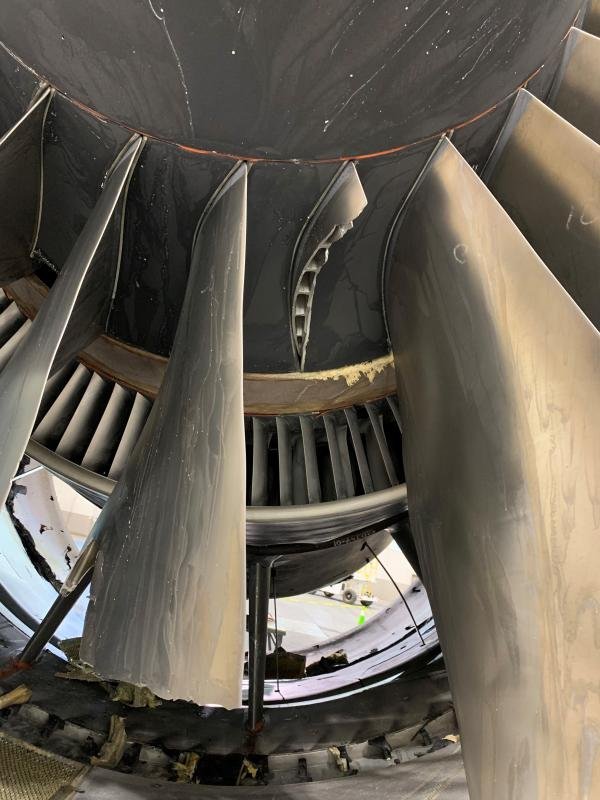While the investigation progresses at pace, the agency announced why it thinks the engine failed
Following an initial examination, the National Transportation Safety Board (NTSB) says the engine failure of a United Airlines Boeing 777 was likely the result of metal fatigue.
Flight 328 departed Denver International on February 20 and shortly after take-off experienced a right engine failure. The incident led to the ejection of the majority of the powerplant’s nacelle including the inlet which left debris strewn across a Denver neighbourhood.

The 777-200, N772UA (c/n 26930), returned and landed safely at the facility and was met by emergency crews. There have been no reported injuries on the aircraft or on the ground.
The widebody is powered by two Pratt & Whitney PW4077 turbofan engines.
The NTSB says the failure involved the separation of one fan blade at the root where it attaches to the hub – this is believed to have been caused by metal fatigue – and an adjacent blade at about mid span.

At a media briefing, Robert Sumwalt, the agency’s chairman said the main fan blade was being flown to Pratt & Whitney’s laboratory where it will be “examined under the supervision of NTSB investigators.
“For the fan blade that was fractured mid span, the damage with it is consistent with it being stuck when the other blade banged into it.”
Sumwalt also confirmed that upon inspection of the cockpit, the fire handle for the number two engine had been activated and that both fire bottles had been discharged.

“Our investigators [have] conducted interviews with the crew and looking ahead, the engine will be removed and torn down, a maintenance records group will be formed to examine the maintenance history of the engine and airframe,” he added.
While initially it was suspected that the failure could have been uncontained because of the level of damage to the exterior of engine, Sumwalt declared: “It does not appear that anything punctured through the containment ring.”

For the most part, the damage was confined to the engine but there was a small level of damage to the right wing and body fairing. However, the NTSB chairman was keen to point out that there was no structural damage.
Read more about the flight, aircraft and international response here: https://www.key.aero/article/everything-we-know-so-far-about-united-777-engine-incident

